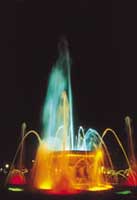Food For Thought
Ideas To Digest For Aspiring Pros
Ever consider turning pro?
Then you probably are a whiz at f/stops, shutter speeds, lighting, composition,
exposure values, and all the other technical stuff you need to know
about to take great pictures. Specialize In Not Specializing. Several years ago, pro photographer Robert Huntzinger (you may have seen his work in the Sports Illustrated swimsuit issue) gave a presentation of his work. He opened up his speech with a great line, which is also good advice. He said, "My specialty is not specializing." What he meant was that he's capable of doing a variety of photography assignments, from photographing pretty girls to photographing pretty cars. |
|||
If you want to succeed in
the competitive world of pro photography, following Huntzinger's
advice is a good idea. |
|||
Write All About It.
There are a million photographers who want to get their work
published, but only a half a million who can write. If you can combine
your photography skills with writing skills, then you'll have a
much, much better chance of getting published--and making some money. |




































